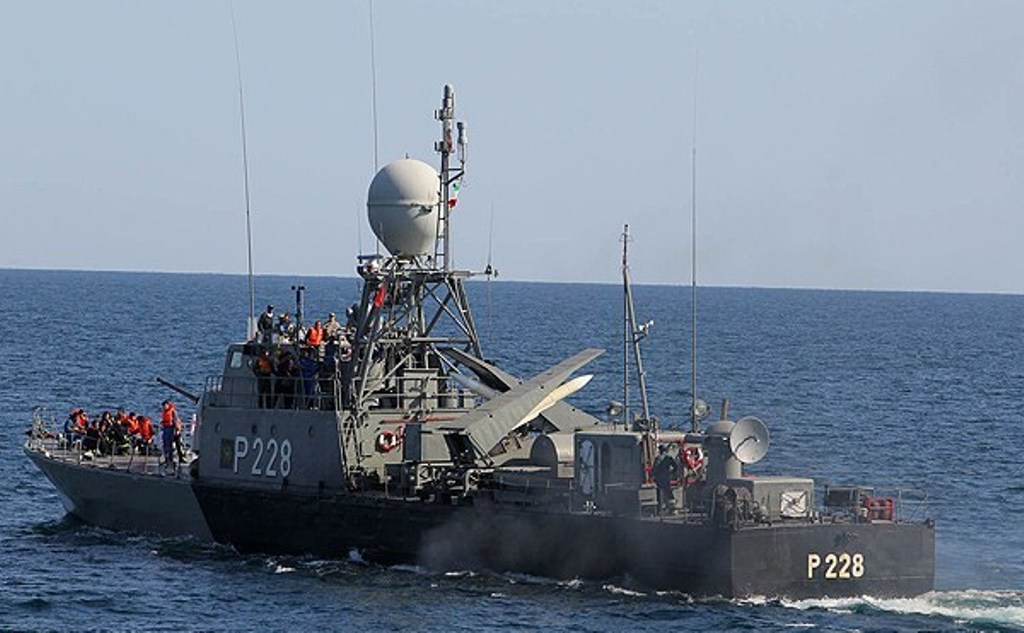Penguin
ELITE MEMBER

- Joined
- Jan 11, 2009
- Messages
- 13,047
- Reaction score
- 56
Operational rangesAs I said!
Their Anti Ship Missiles have far lesser range & and are fewer in number than Iran's Mowj Class
Kh-35 = 130 km (70 nmi)
Kh-35U = 260-300 km (up to 160 nmi), depending on source.
Noor = 30-170 km depending on the model
Qader = 200 - 300km depending on the model/source
Mowj carries max. 4. (2x2) The DPRK corvette is quoted as having 2 launchers for Kumsong-3 anti-ship cruise missile. If you know about Uran and look at other DPRK ships, you can conclude 2 launchers = 4 missiles.
See e.g.
http://arstechnica.com/information-...-previously-secret-stealth-missile-hoverboat/
https://www.nknews.org/2015/02/state-media-highlights-test-launch-of-anti-ship-missile/
https://www.nknews.org/2015/02/n-korea-flaunts-new-stealth-ship-with-advanced-missile-capability/


2x 20mm Oerlikon 20 mm/85 KAA clones (in service since 1985) on GAM-BO1 like mounting and 1 x 40mm Bofors 40/L70 clone (in service since late 1940s) versus multiple 14.5mm gatlings (date unknown) and 30mm AK630 type gatlings (originally develop 1976).They have rotary cannons so again a less advanced & less powerful cannon that Iran's Owj Class
1x 76mm/62 Oto Melara Compact clone (in service since early 1960s) installed versus space and weight reserved for a medium caliber gun.
Sure, that sounds like much less advanced an less powerfull gun armament....
Sure, but Iran's ships have at best 4 rounds of these on board, and the launchers cannot be reloaded while at sea, and no spares are carried on board. The DPRK ships have at least 1x a 6-round launcher, which can easily be reloaded at sea and no doubt a sufficient number of spare rounds is carried. Also, the Iranian SAMs are semi-active radar homing and require target illumination. This is provided by a single radar illuminator i.e. the systems can engage only 1 target at a time, and one must wait for the target engagement to be complete before another target can be engaged. Whereas the DPRK boats have IR homing missiles, which are fire-and-forget, so that multiple targets can be engaged in very rapid succession.Iran's Jamaran, Damavand & Sahand are equipped with antiaircraft missiles that can hit targets ~25km & +50KM(Sahand) & theirs is under 8km max
So, there are some clear trade-offs made against range.
And, since no info on or discussion of electronics and sensors (including radars) was provided, you know this how? At this point, this is just your (unsubstantiated) claim.Iran has a far more advance electronics, sensors & radar almost more advanced everything!
No range and endurance data was provided on the DPRK ship, so I really wonder how youcan make such a claim. It is not necessarily the case that a longer ship automatically has greater range (more important is type of propulsion > fuel consumption), or is far better equipped. In the Dutch navy e.g. our 108m Holland class ships have longer range than our 122m Doorman class ships. The 122m ships are 3300 tons and the 108m ships 3750 tons. The former is a richly equipped but older frigate and the latter an more austerely equipped but newer OPV. In terms of quality of systems, the latter is more modern.Their ship is 77meters long ours is 95 Meters with a much shorter Helo pad so it's far better equipped with a greater range.
As indicated by e.g. Janes', DPRK actually has 2 versions of the same corvette: one with facilities for a helicopter, the other better armed and equipped but without helicopter.
ANYWAY: The whole point of comparison was to look at approaches taken by different states / navies operating under similar conditions i.e. not dong measuring and chest thumping.
Last edited:














